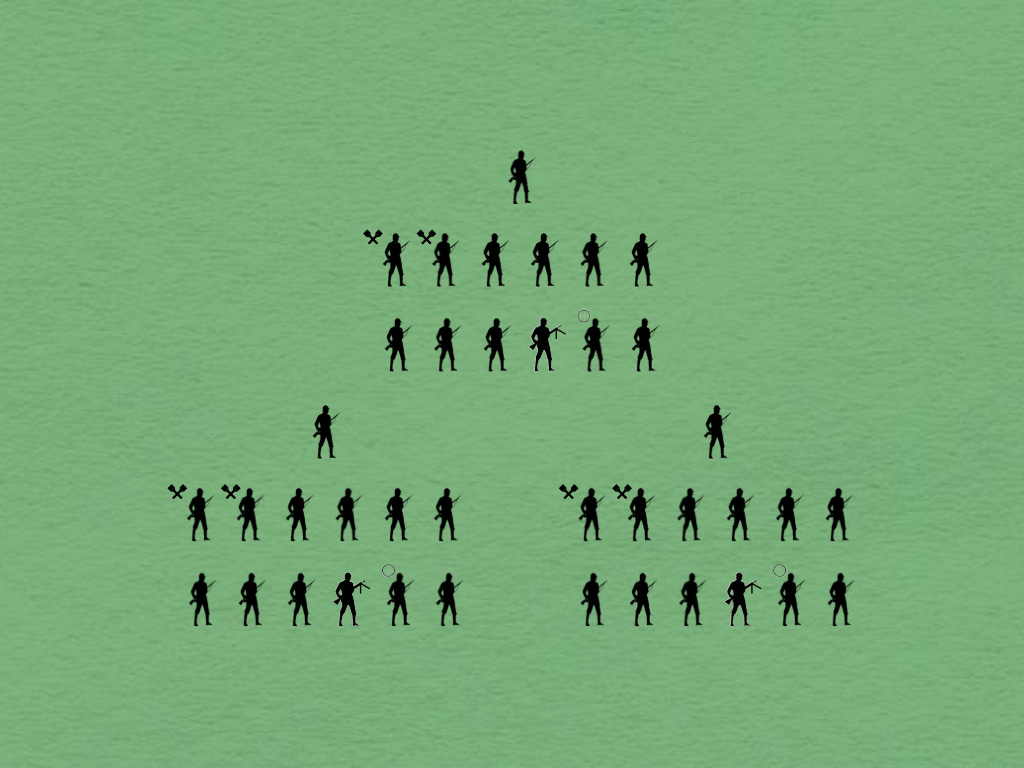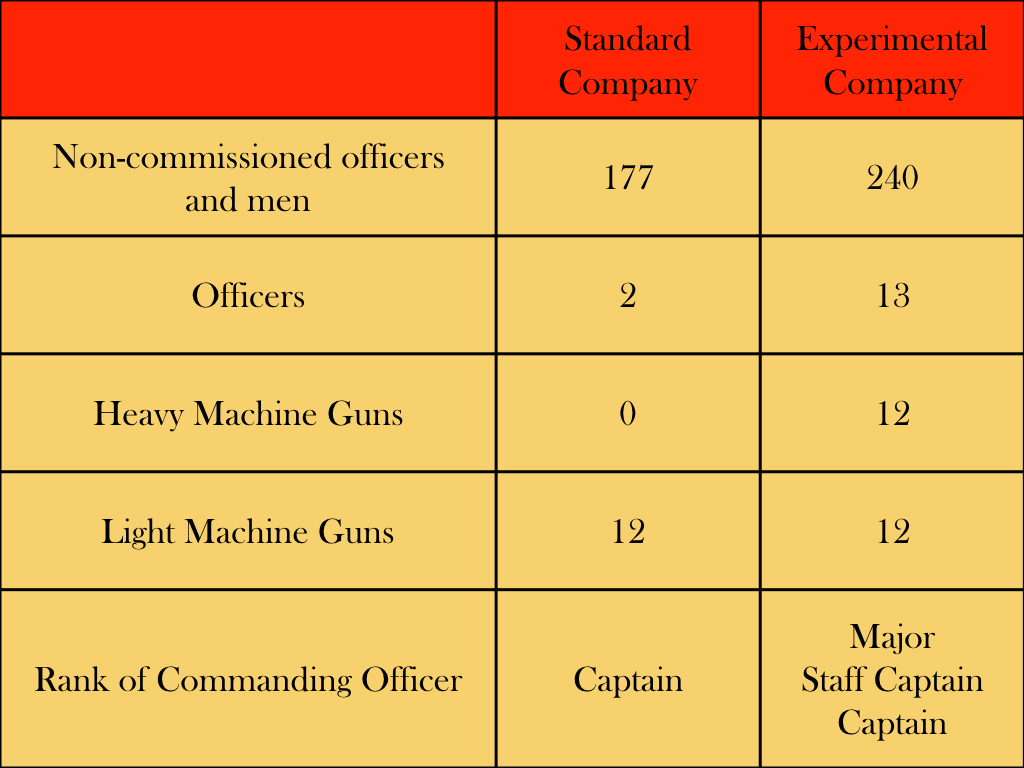When fully mobilized, standard infantry company of the army of Czechoslovakia of 1923 was composed of four uniform platoons, each of which was commanded by a warrant officer. Each platoon consisted of three thirteen-man sections [družstva], each of which was sub-divided into two elements: a six-man “shooting squad” [roj strelecky] and a six-man “striking squad” [roj uderny]. (The shooting squad consisted of a leader, a designated marksman, and a four-man light machine gun team. The striking squad was composed of a leader, four riflemen, and two grenade throwers.)
Late in 1923, the Czechoslovak infantry began to experiment with infantry companies of a very different sort. Much larger than the existing companies, these units also consisted of twelve sections. These new sections, however, were not organized into platoons. Rather, the lieutenant in charge of each section reported directly to the officer commanding the company.1
Each section was divided into an eight-man heavy machine gun squad and a ten-man light machine gun squad. Thus, the company as a whole was armed with twelve heavy machine guns and twelve light machine guns. (Most of the heavy machine guns in the inventory of the Czechoslovak Army of 1923 were Schwarzlose guns inherited from the armies of the Hapsburg Empire. The light machine guns, however, were of a wide variety of types.)
As might be expected, the experimental company did not fare well in field tests, and the idea was soon relegated to a trunk in the attic of the Good Idea Fairy. Nonetheless, the experiment seems to have served as “declaration of independence” from the French advisors, assumptions, and methods that had played such a big role in the Czechoslovak Army over the course of the five preceding years.
Source: Reports of the United States military attaché in Vienna, 1922-1924. On file at the U.S. National Archives, Washington, D.C., Record Group 165.
In the Czechoslovak Army of 1923 there were two types of captains and three grades of lieutenant. The American attaché translated these ranks as “staff captain,” “captain,” “first lieutenant,” “lieutenant,” and “sub-lieutenant.”






